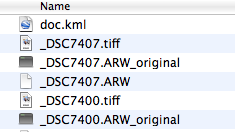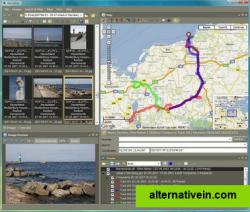
- Exiftool geotag how to#
- Exiftool geotag mac os x#
- Exiftool geotag mac os#
FineGeotag adds GPS coordinates after photos are taken, using non-stale GPS coordinates. OpenCamera app has mode to allow shoot only is GPS is enabled. Most Android devices default camera store gps coordinates in exif. Unfortunately for most budgets these are generally more expensive prosumer or professional cameras. Some (not many!) cameras give you the option to use an internal GPS device or connect to an external GPS device and geotag photos as you take them. Note a timezone difference beetwen gpx and camera time. This command may be useful for cheap acton cams like SJCAM with strong time drift in photo timelapse mode. Mapillary_sampled_video_frames/GH015314/*.jpgĮxampe of geotagging images taken with strong timedrift on GoPro Timewarp mode. Windows and Mac executables)Įxiftool -overwrite_original -progress -ImageDescription = -geotag osmand.gpx \ ExifTool (Perl library and command-line application. A_Photo_Manager Android app to manage local photos including support to view/edit geo-data. Mappero Geotagger (Linux, Mac OS X, Windows, graphical with GPX correlation) (GPLv3).updates Picasa web photos from GPS data track on the phone/tablet)
 JetPhoto Studio (Windows, Mac, commercial with free version). JPhoto Geo Tagger (Java, command line tool). geotag (Java) (GPLv2+Public domain+"a BSD license"+"modified BSD"+LGPL+Freeware).
JetPhoto Studio (Windows, Mac, commercial with free version). JPhoto Geo Tagger (Java, command line tool). geotag (Java) (GPLv2+Public domain+"a BSD license"+"modified BSD"+LGPL+Freeware). BT747 (Windows, Linux, Mac OS X (Java application)).
 digiKam (digital photo management application for KDE). GPS-correlate (Linux) (GPL v.2 or later). Geotag from GPX - A python script supplied by Mapillary. Fotogeotag by Javawa (Windows/Mac, freeware). The articles describe some background of geotagging and introduce some programs for geotagging.Īn incomplete list of geotagging software follows: Some articles on geotagging of photographs can be found at (german only, sorry). It makes life easier if you set your camera's time to UTC, the same as that used in GPS signals or, if possible, to set your GPS receiver to your local timezone. Take a photo at a known point (road crossing, sharp turn), and match this manually - then the time difference can be calculated. Set once a waypoint at the same time you take a photo => photo and waypoint must match (time shift can be found out between GPS and camera). Set your PC or Mac to sync with an atomic clock and then take pictures of the computer's clock. Take a picture of your gps displaying the time. It is necessary to correct for clock errors in the camera by synchronising with the gpx file. It will get a time and date from the photo, and work out where you were standing at that time using the tracklog.
digiKam (digital photo management application for KDE). GPS-correlate (Linux) (GPL v.2 or later). Geotag from GPX - A python script supplied by Mapillary. Fotogeotag by Javawa (Windows/Mac, freeware). The articles describe some background of geotagging and introduce some programs for geotagging.Īn incomplete list of geotagging software follows: Some articles on geotagging of photographs can be found at (german only, sorry). It makes life easier if you set your camera's time to UTC, the same as that used in GPS signals or, if possible, to set your GPS receiver to your local timezone. Take a photo at a known point (road crossing, sharp turn), and match this manually - then the time difference can be calculated. Set once a waypoint at the same time you take a photo => photo and waypoint must match (time shift can be found out between GPS and camera). Set your PC or Mac to sync with an atomic clock and then take pictures of the computer's clock. Take a picture of your gps displaying the time. It is necessary to correct for clock errors in the camera by synchronising with the gpx file. It will get a time and date from the photo, and work out where you were standing at that time using the tracklog. 
The easiest way is to use software that calculates the photo's position by using a corresponding GPS tracklog and most OSMers seem to use this method. Use software that allows you to manually select where the photo was taken using a map (this is probably not suitable for openstreetmap use due to copyright problems).Use software that allows the manual editing of the photo's location.Record a GPS tracklog and then use software to calculate the photo's position from the tracklog.Use a GPS-enabled camera (or camera enabled GPS/smartphone) - convenient but expensive.2 Geotagging photos from a GPS tracklog.
1 How to write the location into the photo.







 0 kommentar(er)
0 kommentar(er)
